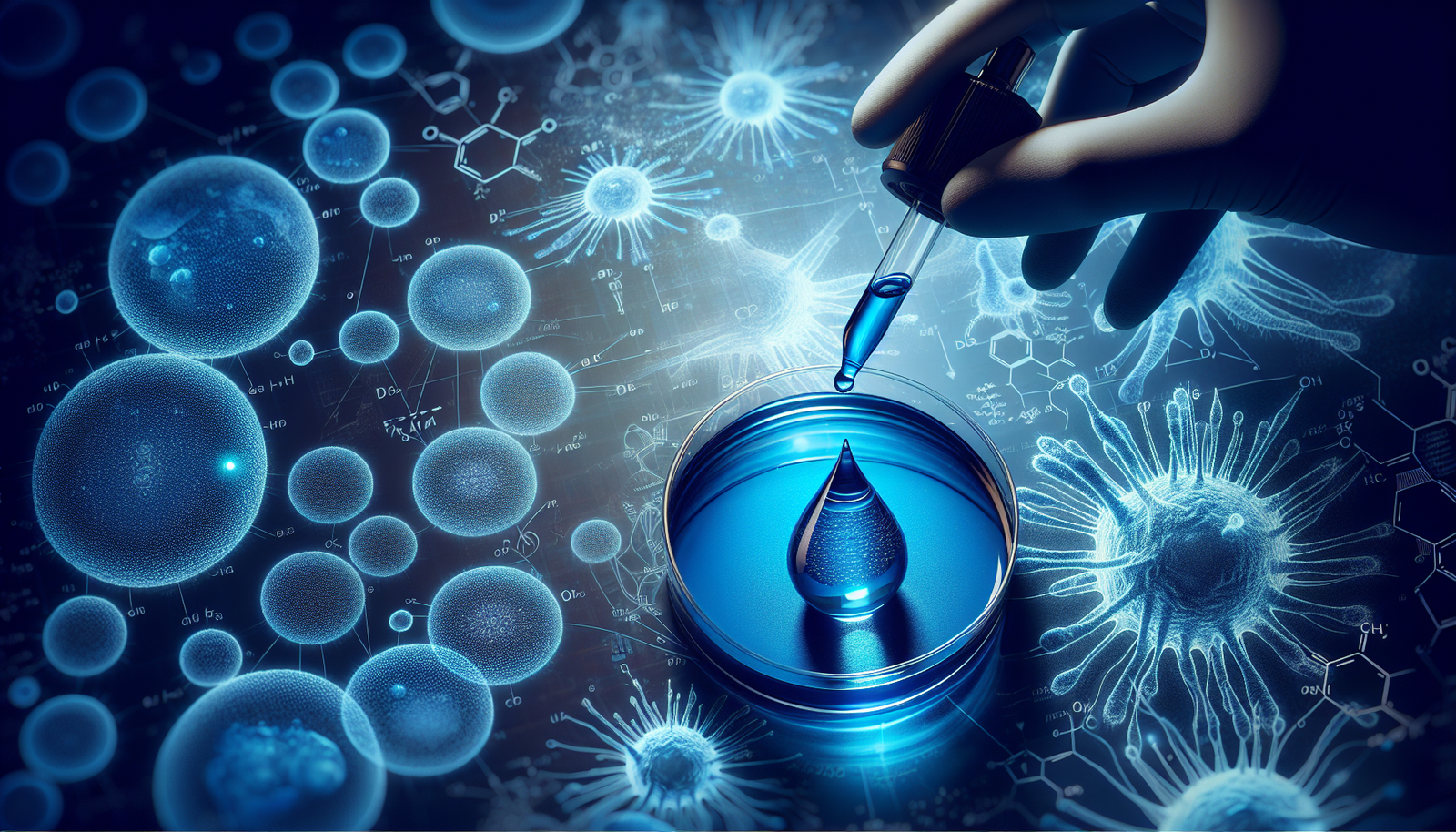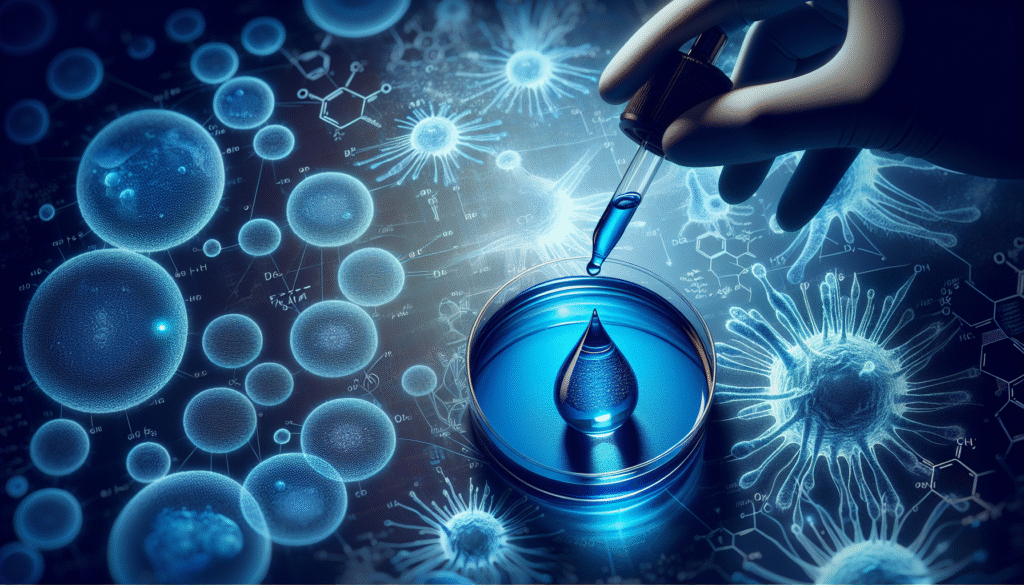
Have you ever wondered how certain compounds, such as Methylene Blue, can influence cellular functions and overall health? Methylene Blue is more than just a stain used in laboratories; it has garnered attention for its potential therapeutic applications and its intriguing role in cellular metabolism. This article will examine the science behind Methylene Blue, its mechanisms of action, and its implications for cell health.

What is Methylene Blue?
Methylene Blue is a synthetic dye originally developed in the late 19th century. It has been widely used in various fields, including biology, medicine, and chemistry. In the medical realm, Methylene Blue has historical significance as a treatment for malaria and is still utilized in certain diagnostic procedures and therapeutic applications today. Understanding what Methylene Blue is and its various functions opens the door to comprehending how it affects cells.
Chemical Structure and Properties
Methylene Blue, or 3,7-bis(dimethylamino) phenothiazin-5-ium chloride, is classified under thiazine dyes. Its structure includes a phenothiazine ring with multiple nitrogen atoms, contributing to its ability to accept and donate electrons. This particular property is crucial, as it plays a role in its redox activity and effects on cellular metabolism.
The compound is typically presented as a blue powder that dissolves in water to yield an intense blue solution. Its color is not just visually striking; it signals the dye’s ability to participate in biochemical processes. By grasping its chemical composition, layers of complexity in its interaction with biological systems reveal themselves.
Mechanisms of Action of Methylene Blue
Understanding the mechanisms through which Methylene Blue operates is key to unlocking its potential in cellular functions. It primarily acts as an electron carrier and has the ability to influence various biological pathways.
Electron Transport Chain
One of the primary roles of Methylene Blue in cells relates to the electron transport chain (ETC), an essential component of aerobic respiration. Within mitochondria, the ETC is responsible for producing ATP, the energy currency of the cell.
When Methylene Blue enters the mitochondrial membrane, it can accept electrons from NADH and subsequently donate them to other electron carriers. This action can help maintain cellular respiration when the normal function of the electron transport chain is impaired.
Table 1: Role of Methylene Blue in the Electron Transport Chain
| Mechanism | Effect on Cellular Respiration |
|---|---|
| Electron Carrier | Accepts electrons from NADH, facilitating ATP production |
| Redox Balancing | Aids in maintaining redox state, preventing oxidative stress |
| Mitochondrial Functionality | Supports mitochondrial performance in compromised states |
The support Methylene Blue provides to the electron transport chain highlights its potential therapeutic effects in conditions characterized by mitochondrial dysfunction, such as neurodegenerative diseases.
Antioxidant Properties
In addition to its role as an electron carrier, Methylene Blue exerts significant antioxidant effects. Oxidative stress has been implicated in various diseases, leading to cellular damage and dysfunction. Methylene Blue’s ability to scavenge free radicals forms an essential part of its therapeutic profile.
Moreover, its antioxidant properties can help mitigate apoptosis, the programmed cell death that often escalates in response to oxidative stress. By phenomena related to Methylene Blue’s role in reducing cellular damage, one can better appreciate its potential in a therapeutic context.

Clinical Applications of Methylene Blue
Given its diverse mechanisms of action, Methylene Blue has found applications across various medical fields, from psychiatry to infectious disease treatment.
Treatment of Methemoglobinemia
Methylene Blue is most famously recognized for its role in the treatment of methemoglobinemia, a condition characterized by elevated levels of methemoglobin, a form of hemoglobin that is unable to effectively transport oxygen. When administered, Methylene Blue helps convert methemoglobin back to its functional state, thus restoring oxygen-carrying capacity.
The clinical usage of Methylene Blue in this context underscores its practical benefits and supports the need for further research into its broader applications.
Neuroprotective Effects
Research into Methylene Blue has extended into its potential neuroprotective effects, especially in the context of neurodegenerative disorders such as Alzheimer’s disease and Parkinson’s disease. Its ability to function as an antioxidant and enhance mitochondrial function shows promise for reducing neuroinflammation and oxidative stress commonly associated with these conditions.
Preclinical studies have suggested that Methylene Blue administration can improve cognitive function and neuronal survival in various models of neurodegeneration. However, more rigorous clinical trials are needed to establish its efficacy and safety in humans.
Antidepressant Effects
The antidepressant properties of Methylene Blue have generated interest, particularly its influence on the monoaminergic system and neurotransmitter pathways. The compound may affect serotonin metabolism, thereby contributing to mood stabilization.
Some studies have indicated that Methylene Blue could be an adjunctive treatment for patients with major depressive disorder. Further examination of these potential effects can help guide treatment recommendations in psychiatric populations.

Potential Complications and Precautions
Despite its many potential benefits, Methylene Blue is not without risks. Certain precautions should be taken to mitigate potential side effects and drug interactions.
Allergic Reactions
Individuals may experience allergic reactions to Methylene Blue, ranging from mild skin reactions to more severe responses. Therefore, proper screening before administration is necessary, especially in those with known sensitivities.
Drug Interactions
Methylene Blue can interact with various medications, including antidepressants, particularly selective serotonin reuptake inhibitors (SSRIs). The potential for developing serotonin syndrome, a serious condition arising from excessive serotonin levels, must be considered in treatment planning.
Dose Dependency
The effectiveness of Methylene Blue is often dose-dependent, and higher doses can lead to toxicity. Appropriate dosing is crucial for achieving desired therapeutic outcomes while minimizing adverse effects. Healthcare providers should maintain a careful balance when determining dosage, particularly for chronic conditions.

Conclusion: A Multifaceted Compound
Through examining Methylene Blue’s multifactorial roles in cellular health, you can appreciate its potential as a therapeutic agent. Its actions as an electron carrier, antioxidant, and modulatory agent for neurotransmission exemplify its versatility within biological systems.
The diverse applications ranging from treating methemoglobinemia to potential neuroprotective effects demonstrate that Methylene Blue holds promise in various medical contexts. Nevertheless, awareness of potential risks and the necessity for further research remain critical to fully understand and utilize this compound effectively in clinical practice.
Methylene Blue exemplifies an intersection of responsibilities in medicine and biology—a tool that requires both critical understanding and ethical consideration. As exploration into its mechanisms continues, opportunities may unfold for you and the broader medical community to utilize Methylene Blue in transformative ways, improving health outcomes through its powerful biological influence.